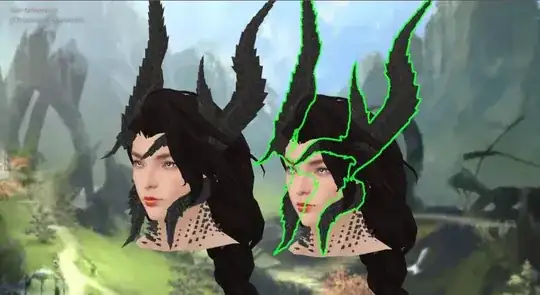Trying to create horns which are both ornamental and defensive, I've read somewhere that beards evolved in humans because we punch each other so much that even just a minuscule amount of hair cushion can make the difference between you dying with a broken jaw or surviving with a few broken teeth but no internal bleeding. With these in mind, one would think that human males are min-maxed for violence.
I'm trying to push the meta even further beyond, by giving people horns; each horn is pointy, and these pointy horns also have sharp and pointy protuberances. In real life if you punch someone barehanded and hit their chin, unless you are considerably heavier than your opponent, you are more likely to crush your own fingers and break them against the sharp jawline of your adversary. Or at least it happens more often when both the victim and the aggressor weigh the same: that's kind of the point of why boxers use gloves.
Following this logic, the jaw horns follow the jawline and then bend down both to expose the pointy protuberances forward and to cover part of the neck.
The top horns exist to block attacks from predators. Historically predators used to pounce on people from behind and bite them in the top of the head.
The prototype also shows some smaller barbs on the neck, which I will remove and place with a 2D textured version but the concept still remains.
I want the horns to be made of either dentine or iron-enriched bone, like the teeth of beavers or scaly foot gastropods.
As of now, there are 8 big horns; can it get up to 16 before it becomes unliveable? What am I trying to achieve? Basically these situations:
You hit this person with a sword in the head; your sword gets stuck between the horns and then she proceeds to beat you with your own weapon.
You punch her face; your fist bleeds and breaks.
You kick her face; you don't walk any more.
You watched too much Twilight and want to bite her neck; her neck bites back.
Also, the rest of the body will be covered in external bony round/flat plates, of the same materials as the horns; it will cover mostly the thighs, back, belly, shins, forearms and chest
